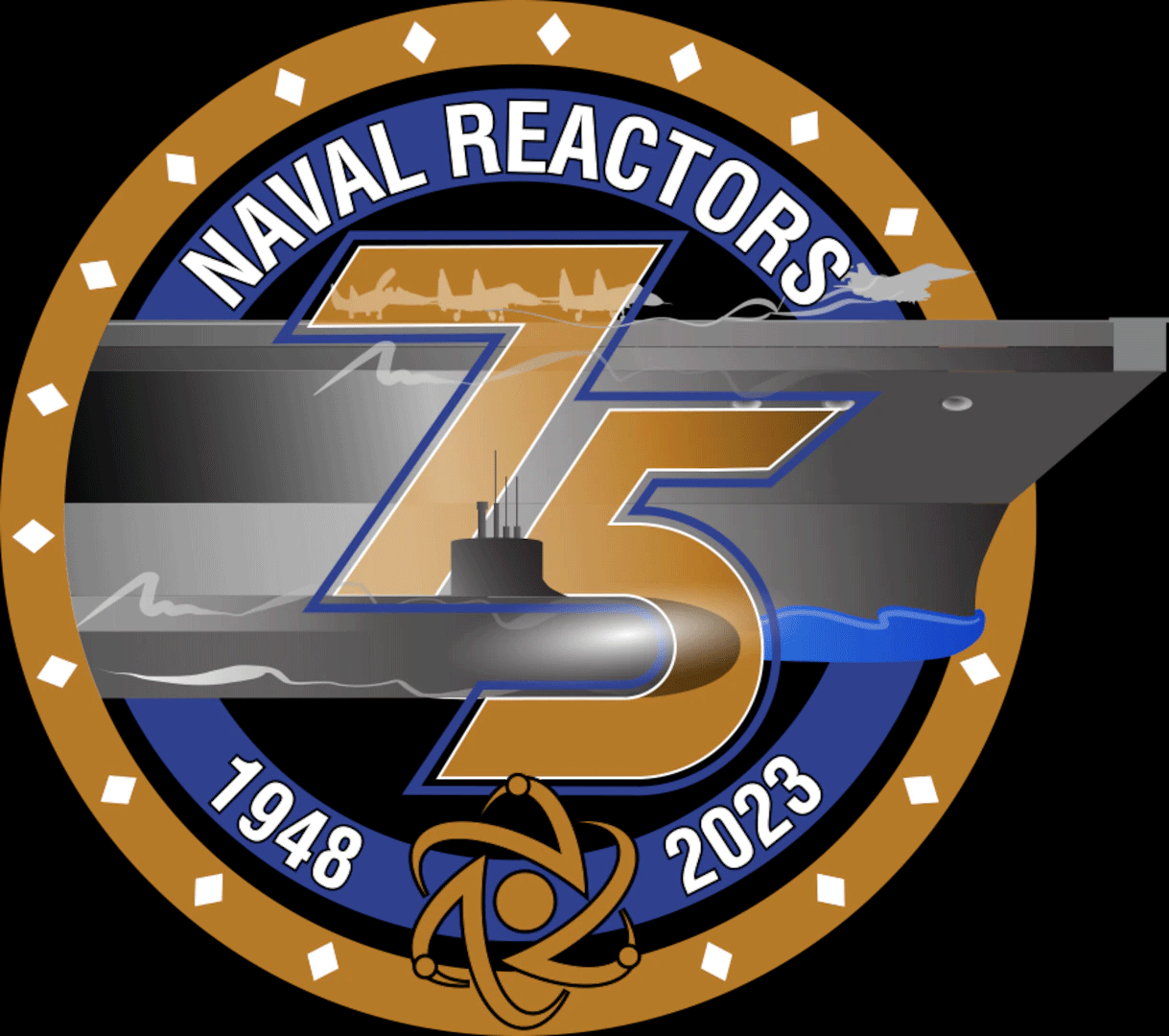August 4 marks the birthday of the Naval Nuclear Propulsion Program, a joint Department of Navy and Department of Energy organization responsible for all aspects of the Navy’s nuclear propulsion, including research, design, construction, testing, operation, maintenance, and ultimate disposition of naval nuclear propulsion plants.
In 1946, shortly after the end of World War II, Congress passed the Atomic Energy Act, which established the Atomic Energy Commission to succeed the wartime Manhattan Project and gave it sole responsibility for developing atomic energy. At this time, Capt. Hyman G. Rickover was assigned to the Navy Bureau of Ships, the organization responsible for ship design.
Rickover recognized the military implications of successfully harnessing atomic power for submarine propulsion and knew it would be necessary for the Navy to work with the AEC to develop such a program. He and several officers and civilians were sent to the AEC laboratory at Oak Ridge, Tennessee, for a year to learn the fundamentals of nuclear reactor technology.
Although theories of nuclear power were understood, the technology to build and operate a shipboard nuclear propulsion plant did not exist. There were several reactor concepts; the real challenge was to develop this technology and transform the theoretical into the practical. New materials had to be developed, components designed, and fabrication techniques worked out. Furthermore, installing and operating a steam propulsion plant inside the confines of a submarine and under the unique deep-sea pressure conditions raised a number of technical difficulties. Faced with these obstacles, the team at Oak Ridge knew that to build a naval nuclear propulsion plant would require a substantial commitment of resources and a new level of Government and Industry commitment.
Rickover returned to Washington and used every opportunity from his post at Navy Bureau of Ships to argue the need to establish a Naval Nuclear Propulsion Program. On August 4, 1948, the Navy created the new Nuclear Power Branch (Code 390) with Rickover as its head within the Bureau’s Research Division.
Just seven years later, Rickover and his team put the world’s first nuclear-powered submarine, USS Nautilus (SSN 571) to sea. Three years later, on Aug. 3, 1958, Nautilus accomplished the impossible when the ship reached the geographic North Pole, 90 degrees North. Cmdr. William Anderson was in command and had a crew of 116 Sailors aboard.
“Such a journey was previously unthinkable,” said Adm. Frank Caldwell, Director of the Naval Nuclear Propulsion Program. “But this single event demonstrated the awesome, asymmetric advantage that nuclear power afforded our submarines and America’s national defense. The Nautilus could go to any ocean in the world, anytime, and remain there virtually as long as desired.”
Ten years after the program started, the Navy was sailing four fully-operational nuclear-powered submarines and building the first nuclear-powered aircraft carrier, USS Enterprise (CVN 65), with eight reactor plants. In the next two years, the first strategic ballistic missile submarine, USS George Washington (SSBN 598) went on its first strategic deterrent patrol.
Over the last 75 years, Naval Reactors has operated 273 reactors plants, taken 562 reactor cores critical including 33 different designs, and steamed more than 171 million miles with over 7,500 reactor years of safe operations. The Naval Nuclear Propulsion Program and the Navy’s nuclear-powered warships have demonstrated clear superiority in defending the United States – from the Cold War to today’s unconventional threats and strategic competition – Naval Reactors ensures the American Sailor and the nuclear-fleet are ready to fight and win the nation’s wars.
There is no substitute for presence and nuclear-powered aircraft carriers remain the most survivable and versatile airfields in the world, while nuclear-powered fast attack and large payload submarines hold adversaries at risk in both contested seas and open oceans. Today, the Navy operates 99 reactors and 79 nuclear-powered warships – including the largest, most capable warship ever built, USS Gerald R. Ford (CVN 78) which is on her maiden deployment in European waters, underway on nuclear power.
“It’s an exciting time in the Naval Nuclear Propulsion Program; we are fully embracing our responsibility to continue powering maritime dominance for the next 75 years,” said Caldwell.

